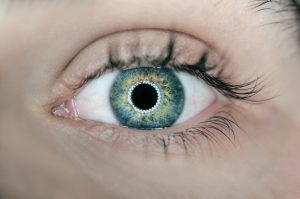Orthokeratology, commonly known as ortho-k, is a special kind of contact lens that can effectively temporarily reshape your cornea. Think of ortho-k as the orthodontics of the eyecare world, as it involves a temporary reshaping (like dental braces) part of your eye to improve your vision. Here at R Woodfall, we now offer ortho-k treatment in selected clinics as part of our eye care services.
If you’re curious to learn more about ortho-k, including how it works and who it’s for, keep reading.
Which eye condition is ortho-k used for?
Ortho-k is used primarily to treat those with myopia (near-sightedness), but new ortho-k lenses may be able to treat other refractive errors such as astigmatism. Myopia is a common eye condition whereby the patient is only able to see objects close to them clearly, as objects in the distance appear blurry. One of the most common causes of myopia is misshapen cornea, which disrupts how your eye is able to focus light. Ortho-k aims to reshape your cornea temporarily, with specially designed contact lenses that are to be worn throughout the night. This can help correct your refractive error, leaving you with improved vision.
How does ortho-k treatment work and what can you expect?
This treatment works by reshaping your cornea (the flexible lens in front of your eye), to allow light that enters your eye to focus properly. This effectively helps to correct myopia, but only if you continue wearing your ortho-k lenses at night as instructed.
To do this, your ophthalmologist will need to examine your cornea in more detail in order to create a specialist lens tailored to you. To do this, they will use a piece of equipment called a corneal topographer to examine the exact shape of your cornea. This examination does not hurt so there is no need to worry.
After this you will wear your ortho-k lenses at night as instructed by your ophthalmologist. Patients usually notice a difference in a few days to a couple of weeks, depending on the severity of their myopia.
The benefits of ortho-k
There are several benefits when it comes to this specialist treatment. They include:
- Non-surgical option
- Eliminates the need for contact lenses or glasses during the day
- Corrects myopia (temporarily)
Ortho-k can have a profound effect on the patients daily life, as they temporarily won’t need to rely on eyewear to see clearly. If you think ortho-k may be ideal for you, contact our team today to find out more about how we can help you.
















